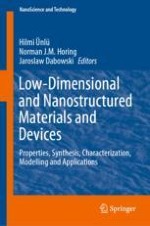This book focuses on the fundamental phenomena at nanoscale. It covers synthesis, properties, characterization and computer modelling of nanomaterials, nanotechnologies, bionanotechnology, involving nanodevices. Further topics are imaging, measuring, modeling and manipulating of low dimensional matter at nanoscale. The topics covered in the book are of vital importance in a wide range of modern and emerging technologies employed or to be employed in most industries, communication, healthcare, energy, conservation , biology, medical science, food, environment, and education, and consequently have great impact on our society.
